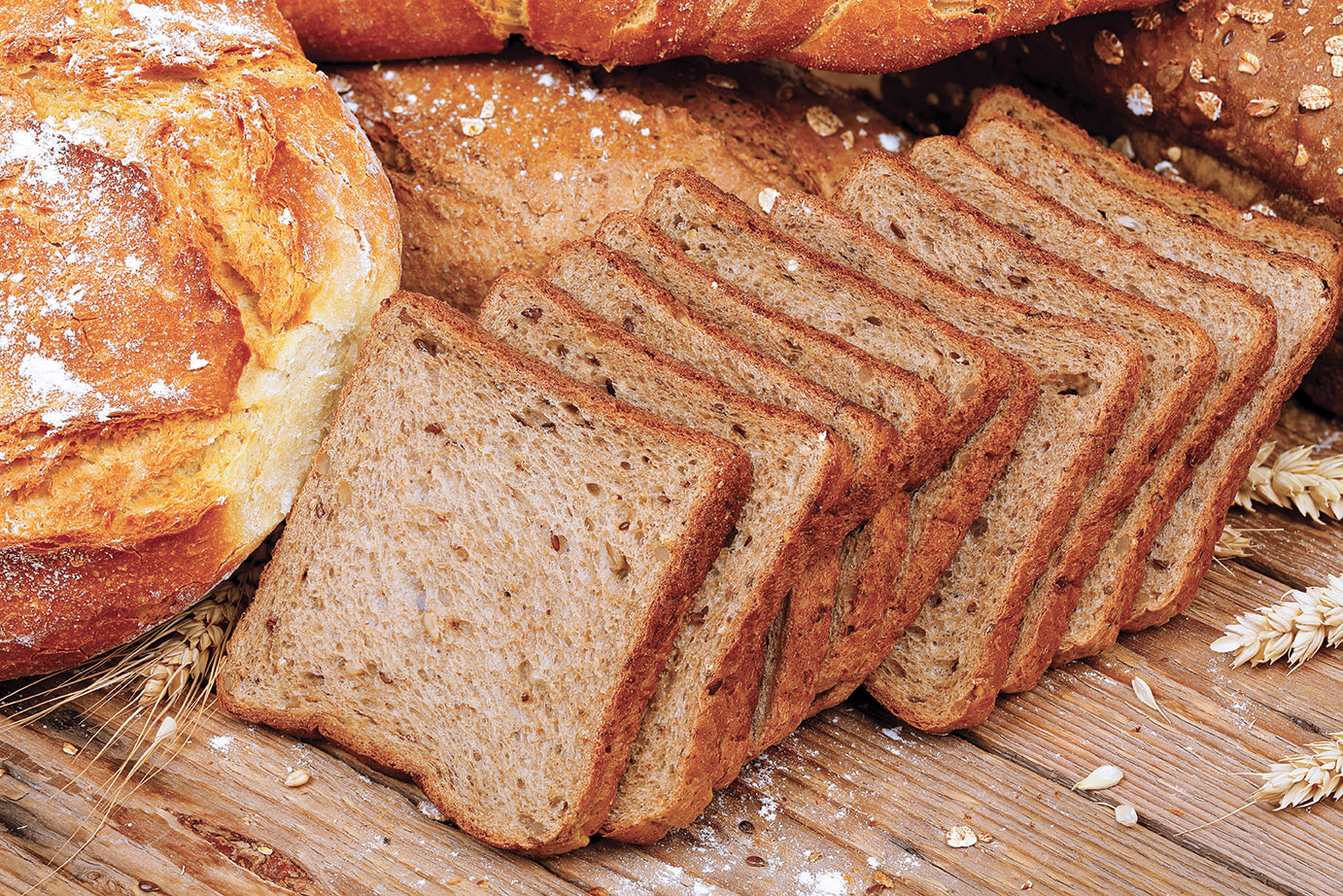Good Milling and End-Product Performance is Available in 2019 Hard Red Winter Wheat Supplies
Unexpectedly high yields from the U.S. Plains to the Pacific Northwest (PNW) resulted in lower wheat and flour protein in the 2019 hard red winter (HRW) wheat crop, but the crop exhibits good milling and end-product characteristics. Even though mixing times and tolerances are shorter than the five-year averages, the loaf volumes achieved indicate there is adequate protein quality to make quality bread. This crop meets or exceeds typical HRW contract specifications and should provide high value to the customer. The 2019 HRW crop can be characterized as clean and sound with very good milling properties, but with below average protein content still capable of producing good end products.
That is a summary of the major regional results for HRW from the upcoming U.S. Wheat Associates (USW) 2019 Crop Quality Report. California HRW data is reported separately. Plains Grains, Inc., in cooperation with the USDA/ARS Hard Winter Wheat Quality Lab, Manhattan, Kan., analyzed 494 HRW samples collected from grain elevators in Texas, Oklahoma, Kansas, Colorado, Nebraska, Wyoming, South Dakota, Montana, Washington, Oregon and Idaho. Funding for the annual survey come from USW member state wheat commissions and the USDA Foreign Agricultural Service.
Weather and Harvest: The 2019 HRW planted area represents near historic 100-year lows, continuing the trend of recent years. Despite stagnant planted area, HRW production is estimated at 22.9 MMT (840 mil bu), a 27% increase over 2018. USDA estimates the HRW supply (excluding imports) is the third highest in the last 20 years.
Various climatic conditions challenged this crop. However, moisture remained adequate, or even excessive, in the central and southern production areas and resulted in better than expected yields, lower than average protein, but otherwise good milling and processing characteristics. The U.S. Southern, Central and Northern Plains experienced an unusually wet spring, slowing crop maturity and uniformly delaying the beginning of harvest two weeks or more. At the same time, the PNW and Montana experienced abnormal swings in temperature and severe storms. Despite intense and prolonged moisture during later stages of crop development, disease and insect pressure in most production areas was unusually low. Once harvest began, it progressed normally in most production areas.
Wheat and Grade Data: The 2019 crop has generally very good kernel characteristics. Overall 93% of Composite, 91% of Gulf-Tributary and 97% of PNW-Tributary samples graded U.S. No. 2 or better. Average test weight of 60.6 lb/bu (79.6 kg/hl) is below 2018 but above the 5-year average. Average dockage (0.5%), total defects (1.3%), foreign material (0.2%) and shrunken and broken (0.8%) are all equal to better than 2018 and the 5-year averages. Average thousand kernel weight of 32.7 g significantly exceeds last year and the 5-year average (both 30.7 g). Kernel characteristics, including test weight, thousand kernel weight and kernel diameter are very good and consistent with favorable growing conditions. However, growing conditions favoring kernel size and test weight are not conducive to accumulating protein, which is below last year and the five-year averages. The average wheat falling number is 378 sec, indicative of sound wheat.
Flour and Baking Data: The Buhler laboratory flour yield average is 74.0%, comparable to the 2018 average of 75.1% and the 5-year average of 75.5%. The 2019 flour ash of 0.48% (14% mb) is comparable to last year’s 0.44% but significantly lower than the 5-year average of 0.55% due to milling adjustments made in 2018. The alveograph W value of 223 10-4 J is significantly lower than last year but comparable to the 5-year average of 234 10-4 J. Farinograph peak and stability times, 3.3 min and 7.3 min, respectively, are significantly lower than last year’s 5.2 min and 12.2 min. Average bake absorption is 62.7%, below the 63.7% value for 2018 but comparable to the 5-year average. Overall loaf volume averaged 863 cc, well below last year’s 901 cc, but comparable to the 5-year average of 851 cc.
Complete 2019 crop quality data for all six U.S. wheat classes will soon be available online and at annual USW Crop Quality Seminars.


